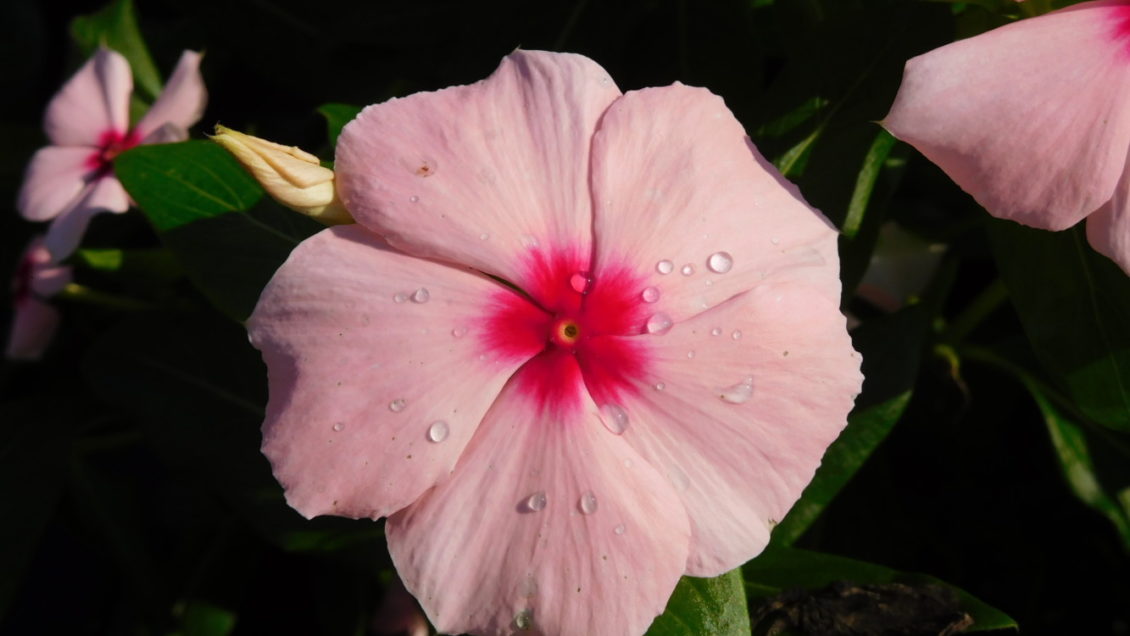CLEMSON – Thanks to a large collection of soil-borne pathogens and a group of persistent Clemson University researchers, a new series of annual vinca bedding plants is planned for release in spring 2019.

Annual vinca (Catharanthus roseus), also known as Madagascar periwinkle, is a plant widely used for landscaping. Steve Jeffers, a professor in Clemson’s plant and environmental sciences department and Clemson Extension specialist, leads a group of researchers working with Syngenta Flowers to develop annual vinca plants resistant to Phytophthora nicotianae – a fungus-like microorganism that causes foliage blight on annual vinca. This pathogen also causes root rot on other plant species.
“Phytophthora foliage blight is the most damaging and devastating disease on annual vinca plants and can be a limiting factor in landscapes,” Jeffers said. “Our part in this study is to help develop Phytophthora-resistant annual vinca plants that can be grown in landscapes in the southeastern U.S.”
Amanda Hershberger, a plant breeder at Syngenta Flowers leading the annual vinca breeding effort, said the large number of isolates of Phytophthora pathogens provided by Jeffers’ lab at Clemson has been instrumental in helping to confirm resistance to Phytophthora foliage blight in new potential commercial hybrids of annual vinca plants. Isolates are individual samples of a pathogen used for testing.
“Many of the isolates in this inventory have been found to be extremely harmful to prior vinca lines,” Hershberger said. “This is important because the Clemson Phytophthora inventory represents a broad range of isolates from different geographical areas throughout the southeastern United States.”
This is the fifth year Clemson researchers have been involved with this project. More than 7,000 annual vinca plants from 323 unique genetic selections were evaluated this year. The plants were inoculated with Phytophthora nicotianae isolates from Jeffers’ lab and then monitored for disease symptoms. These plants were located in a campus greenhouse and at a field site at Clemson’s Musser Fruit Farm near Seneca.
The Clemson study focuses on Syngenta’s annual vinca line, Cora. The new annual vinca series expected for release in 2019 is called Cora XDR.
“The new Cora XDR series has been through the wringer,” Hershberger said. “It has passed internal testing, (as well as) disease screening at Clemson and multiple field evaluations.”
Because of its tolerance to heat, drought and poor soil conditions, annual vinca is a popular plant for South Carolina landscapes as well as landscapes across the southern United States. Information from the Clemson Home and Garden Information Center shows annual vinca is grown as an annual bedding plant that produces durable, abundant flowers from June until frost. Both upright and cascading (creeping) cultivars are available.
Annual vinca is easy to grow and is a great plant to use for beds, borders, edging and containers – as long as Phytophthora pathogens are not present. It prefers full sun. Experts advise planting annual vinca after the ground is very warm to prevent problems from other fungal diseases.
In addition to Jeffers, others working on the project include: Dick Baker, Andrew Gitto, Garner Powell, Daniel Dlugos, and Angela Sterling.
Get in touch and we will connect you with the author or another expert.
Or email us at news@clemson.edu

